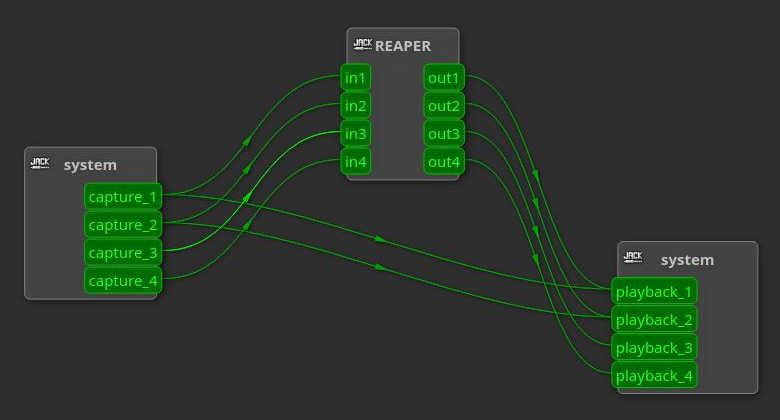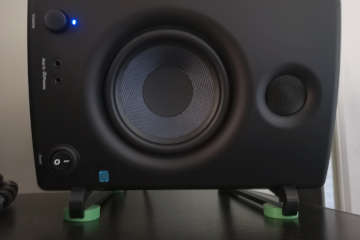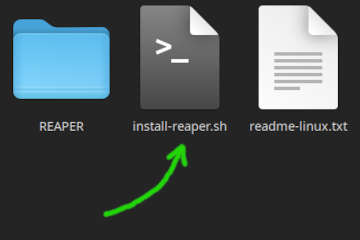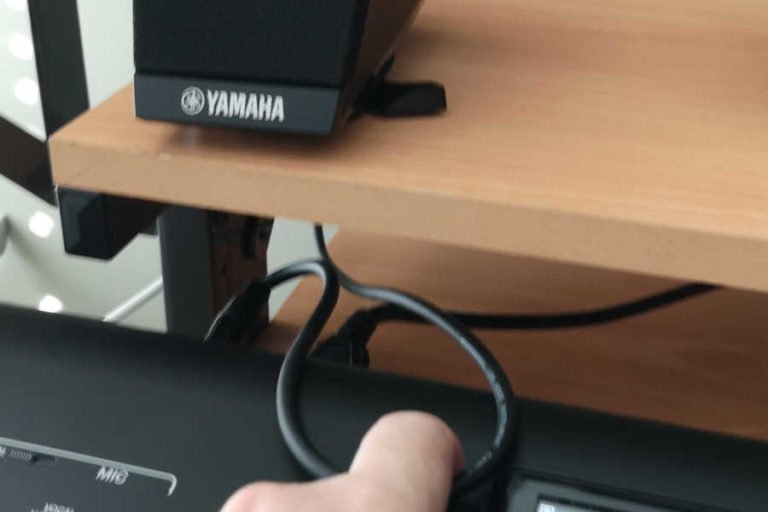I have discovered my golden formula when it comes to audio recording in Linux. Amazingly, the solution is easy because all I needed to achieve success is:
- Linux
- Reaper
- Behringer Audio Interface
Linux
Why Linux? Well, the answer is rather simple. My workstation has an internal SSD with a 256 Gig capacity. Yes, I can divide the drive into two partitions and run Windows 10 on one and Linux on the other. The thing is that dual booting is a pain. Most of my work is web design and content creation for an online music school. Which parts get done in Linux and which need Windows?
I am happy to say that the score has been settled. My main workstation no longer needs the included Windows 10 operating system because the programs I use to do my work are available for all major operating systems.
Which Linux distribution is best?
That depends. I like speed and stability as well as up-to-date packages. On top of that, I don’t depend much on the operating system anymore because we live in uncertain times. For now, Linux seems to get ignored from the virus gang but no one knows for how long. Why is that important? I use the operating system to install the software programs on to. The rest is all on secondary and external SSDs.
If disaster strikes, I boot ArcoLinux from a USB stick, install it in five minutes or do a system restore via Timeshift. That’s it. As long as I have my drives, I will be up and running on any computer, even a new one should worse come to worse. It took me a long time to realize this but I have finally seen the light.
Linux is amazing for web work and pretty much anything now but audio related tasks seemed to have that “step child” feeling. I am happy to report that this is no longer true. Now, in 2019, Linux is more than capable to serve in the recording studio and there are tow components that make this happen. The first is the DAW.

Reaper
Audio recording happens in a software program called DAW which stands for digital audio workstation. There are quite a few software programs to chose from. Harrison Mixbus is a strong contender and already on my Black Friday shopping list. But my number one DAW is Reaper
Reaper if available for free and a personal license sells for only US $60. My MIDI controller came with a lite version of a well-known DAW and the upgrade to a still limited version would be more expensive. Because of that and many more reasons, I have decided on Reaper and the more I use it, the more I appreciate how Reaper works.
No doubt, I will write a lot about Reaper in the coming weeks and months but I do want to say one thing that you should contemplate. Reaper is a small software program. The code is only a few megabytes compared to the big expensive monster programs that install several gigabytes worth of data. Everyone has a different need. I am lucky to pull all of my sounds from my arranger workstation which means that I don’t need any VST instruments.
By default, Reaper is quite unpleasing to the artistic eye but that is a quick fix. There are countless themes on the reaper website which are easy to install and give Reaper that high-end look. The screenshot on top of this blog post shows Reaper with the I Logic Free theme.
The best starting point for amazing-looking Reaper themes is here
Which that out of the way, I like to focus on the last important building block which is the audio interface.
Behringer U-Phoria UMC404HD

According to plenty of blog posts, many of the USB2 audio interfaces work flawless in Linux. I bought the Behringer U-Phoria UMC404HD which has four inputs and plenty of output options to feed two monitors and much more.
Why I chose four over the standard two inputs
Back in the old days, unplugging a microphone was easy. Just turn the mixer channel down and unplug what you want. With audio interfaces, things are bit more primitive. I have used several over the years and none of them handle unplugging cables like a mixing board does. Because of that, I decided on a 4-channel audio interface so that I could leave my two Audio Technika microphones plugged in all the time. It’s not the cheapest option but it does the trick and that is all that matters.
Conclusion
If you dual-boot because of audio related work then let me tell you that those years are over. I have two computers here that both run ArcoLinux which is amazingly simple to use.
One computer is new and has high-end components that can drive a dual 4K monitor setup and more. The other machine is a laptop from 2013 which is still capable of recording complex audio and MIDI arrangements with no problems.
I am 100% happy with the components that I am describing today and feel that 95% of the configuring is done. Everything works and works well. The audio volume is nice and loud while the Behringer audio interface is surprisingly quiet. There are plenty of YouTube videos that show details noise related comparisons between the well-known devices. I was not sure about Behringer but now that I had a chance to actually use it, I am (sure).


